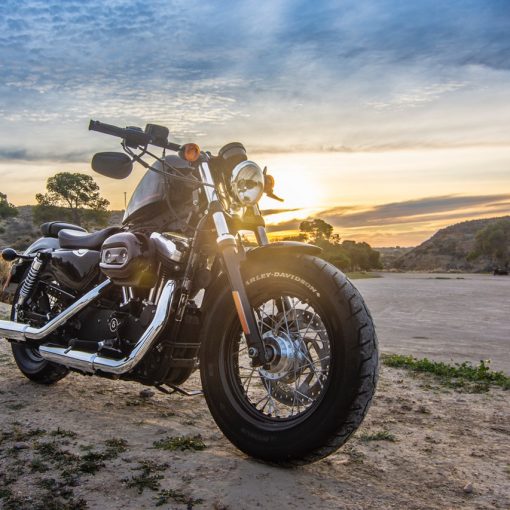If you're shopping around for motorcycle insurance, there are a few basics that you should keep in mind. One is that every state has its laws and requirements regarding this insurance. Secondly, every insurance company has its own policies and price list. Therefore, there's no specific guideline on how much you'll spend or what you'll need to get covered.
However, to spend less, try and compare quotations from different companies and choose only the coverages you need. As for the law, have a professional educate you about the laws on motorcycle insurance in your state to keep you from getting in trouble with authority.
Finally, insurance covers do not compensate for damages that you willfully cause. You must be able to prove that it was 100% an accident for them to consider your claim.
Before you learn about each type of coverage, take note that each one is restricted to a specific cause or outcome and cannot protect you financially outside its cause. For example, a medical cover cannot compensate for motorcycle damage. This, therefore, calls for keenness when choosing your ideal coverage.
Related Content:
- How to make motorcycle insurance cheaper
- How does motorcycle insurance work?
- Average cost of motorcycle insurance
- Do you need motorcycle insurance
Importance of Motorcycle Insurance
Unlike cars, motorcycles are less protective to the rider. Wearing a helmet, knee pads and a pair of gloves won't necessarily protect your body from much. In addition to that, motorbikes are light and they easily wobble. These are some of the factors behind many accidents and fatalities related to motorcycles in the world.
Because it's that easy to get injured or cause fatal accidents when riding bikes, having insurance cover becomes a safety net. Whether you get hurt, injure someone else, or cause property damage, you will receive compensation which takes out the financial aspect when dealing with a tragedy.
Levels of Coverage
Insurance coverage is the amount of liability or risk covered for an individual or entity through insurance services. While most states don't require collision and comprehensive coverage, they are mandatory if you have a loan or lease. While the requirements vary by state, you should have the following levels of coverage at a minimum:
- Basic
- Full
The basic coverage is mandatory as it covers you against the liability for injury, death, or property caused to any third party. However, it doesn't cover you for damages to your motorcycle in an accident. Full coverage motorcycle insurance covers replacement or repairs if your bike is stolen or damaged and property damages you might cause in an accident.
Types of Coverage
If you're caught without the proper insurance, you could face fines, tickets, or even be required to appear in court. Repercussions are even more severe if you cause an accident while riding an uninsured motorcycle. When it comes to motorcycle insurance, full coverage is the best way to protect your bike.
Before calling your insurance company and asking for a quote, take some time to decide on the best coverage you need.
1. Liability Insurance
Whenever you cause a motorcycle accident, you're financially responsible for any medical costs that result. Motorcycle riders are required by law to have liability insurance that covers bodily injuries and damages. As the name suggests, it covers any injury caused to a third party, but it doesn't protect you or the motorcycle.
If you're involved in a collision, a third party will file a liability claim against you or your insurance company for the damages or injuries caused. The insurance company limits the amount of money paid for bodily injury. In most cases, it ranges from $10,000 to $25,000.
Having to cater for medical expenses without insurance coverage can be catastrophic. Most importantly, the insurance agent will ask whether you'd taken the necessary safety precautions, like wearing a helmet. So, it would be best if you avoided situations that might cause your claim to be declined.
To provide as much information as possible to the insurance companies, take photographs immediately after the incident. Photos provide critical information that investigators can analyze. With pictures, it's possible to estimate the distance between various objects and decide who's at fault.
2. Uninsured and Underinsured Insurance
If you're in an accident caused by an uninsured motorcycle rider, uninsured coverage helps pay for medical expenses, lost wages, pain, suffering, and property damage. If you're hurt or your motorcycle is damaged in a crash caused by an uninsured motorist, this coverage helps pay for the damages and injuries.
Having underinsured motorist coverage helps you to get help with medical costs and reimbursement for lost wages. While you can take the at-fault driver to court and sue for the incurred expenses, you'll need time and money with no guarantee that you'll get the settlement you deserve.
Without coverage, you might end up paying for medical costs out of pocket. Avoid leaving the accident scene before an inspector completes the survey.
It would help if you refrained from getting into a settlement with the third party as they may result in a different turn of events. The uninsured coverage also helps in the event of a hit-and-run accident.
3. Property Damage
This form of liability coverage is mandatory in most states. It helps cover the cost of repairs if you're at fault for a motorcycle accident that damages other vehicles, storefronts, or fences. However, it doesn't cover your bodily injuries or the cost to repair your motorcycle.
In both motorcycle and auto insurance, when an accident occurs in which property is damaged, don't admit liability. The insurance companies and police are responsible for determining who's at fault. In some situations, the investigators might apportion different percentages of negligence to various parties.
Since the cause of the accident might be different from what you think, refrain from assuming any obligations without the insurer's consent. Admission of the fault will not only hamper your defense but might constitute a breach of contract, giving the insurance companies sufficient grounds to deny coverage.
4. Collision Coverage
Collision coverage helps pay to replace or repair your motorcycle if destroyed or damaged in an accident with another bike or car, regardless of who is at fault. But it doesn't pay for damage to another person's bike from an accident you cause. If you damage someone else's motorbike, your liability coverage will help pay for the repairs or replacement.
Call your insurance agent immediately so he or she can advise you on what you should and shouldn't do. Avoid talking to the third party's insurers as they will ask for information that will end up hurting you down the road. Be sure to collect accurate information on the scene to fortify your case since insurance adjusters might want to close quickly for as little money as possible.
Failure to notify your insurance company within 72 hours could make you ineligible for coverage. Even if you want to reduce your monthly premiums, avoid skimping on collision and comprehensive insurance policies as they come in handy after an accident.
5. Medical Payments Coverage
In case of an accident, having motorcycle insurance is essential since conventional healthcare plans don't cover the tests you need, prescription drugs, and doctor's consultations. This coverage helps provide medical costs if you and your passenger get injured in a motorcycle accident. The expenses include X-rays and ambulance rides.
However, medical payments coverage doesn't cover injuries you cause to others unless they were riding on your motorcycle during the accident. Motorcycle accidents cause severe injuries, meaning that you ought to consider a high coverage limit. While this will cause your premiums to increase, you'll afford to pay for medical expenses whatever the nature of your accident.
No matter how minor (you think) the accident is, you should always visit a doctor immediately. Not only is a medical report essential for possible lawsuits, but there could be some hidden health concerns that only a medical examination can unearth.
CT and MRI scans are incredibly effective when determining possible spinal and brain injuries. However, these scans are pretty expensive.
Considering that the doctor might require several scans during the exam, ensure that the policy covers them. Once your insurers receive the medical report, they can make the proper settlement to you within four weeks. Medical payments are critical if you require hospitalization.
6. Personal Injury Protection (PIP)
Personal injury protection covers all medical costs for you and your passenger after an accident, no matter who's at fault. Besides the cost of prescriptions, inpatient care, and doctors' bills, it also covers the lost wages.
PIP helps pay for all medical bills that arise from the crash and lost wages if you're unable to work due to injuries sustained from the accident. You also get a settlement if you can no longer perform household chores such as child care or cleaning.
If the injuries lead to death, the policy provides coverage for funeral expenses. PIP also covers you if injured while riding in someone else's motorcycle or hit by a vehicle as a pedestrian.
PIP is also referred to as no-fault insurance. It prohibits injured parties from suing the at-fault riders unless the injuries are severe or the medical expenses exceed a predetermined limit. While motorcycle insurance is costly, it can safeguard you from losses if a passenger or pedestrian sues you after an accident.
7. Comprehensive Coverage
Comprehensive motorcycle insurance covers your bike if it's damaged in an incident but not a collision. Such incidents include vandalism, theft, hailstorm, or falling objects. Like auto insurance, the comprehensive policy only covers the manufacturer's standard parts before the purchase.
The policy is a carbon copy of the sales order that lists every original component of the bike. You shouldn't overlook the collision and comprehensive coverage as they can cover the cost of replacement if stolen.
Motorcycle parts added after the initial purchase require additional equipment coverage. Riders that improve their bikes with accessories and custom parts need additional coverage.
The good thing with this motorcycle insurance policy is that the insurer decides on the deductibles well in advance. If your $8,000 bike has a deductible of $500, you'll only receive $7,500 if it's totaled through vandalism. Since the comprehensive coverage will only pay for the bike's actual value before destruction, you'll have to pay $500 if you want a replacement that costs $8,000.
When hunting for the best motorcycle insurance policies, ensure you get your bike's full replacement cost; suppose it's written off. You require coverage for damage or loss of your upgrades, such as sidecars, transport trailers, or custom exhaust equipment. You also need comprehensive coverage that pays for damage or loss due to natural causes or theft.
8. Bodily Injury
If you're at fault for a motorcycle accident, you'll need coverage to cater for medical expenses. Bodily injury liability is insurance coverage that pays for injuries you cause to other people, including other motorcycle riders, passengers, and pedestrians. In addition to medical expenses, the policy covers lost wages, legal fees, and funeral expenses.
Motorcycle accidents can have debilitating consequences on the rider, passengers, and pedestrians. The riders' vulnerability exposes them to many bodily injuries that could be fatal. One way to stay safe is to obtain bodily injury insurance coverage before hitting the road.
Things that Can Reduce Your Insurance Amount
An insurer will carry out due diligence before quoting their price to a motorcyclist. The due diligence involves looking into your road activity and track record. How many road accidents have you caused? If it's a common occurrence, your premium will be high; and vice versa is also true.
Having attended motorcycle training will also reduce your premiums. Insurers assume that those with professional training are less likely to cause accidents.
Related Content:
- Florida motorcycle insurance
- California motorcycle insurance
- Texas Motorcycle Insurance
- Michigan motorcycle insurance
In Conclusion
When choosing the right insurance cover, finding the balance between protecting yourself and your bike can help you to cover your bases if the worst happens. Avoid limiting yourself to your state's requirements and buy extra coverage to protect yourself in case of an accident. Look into insurance companies with great reviews, affordable premiums and service transparency.




